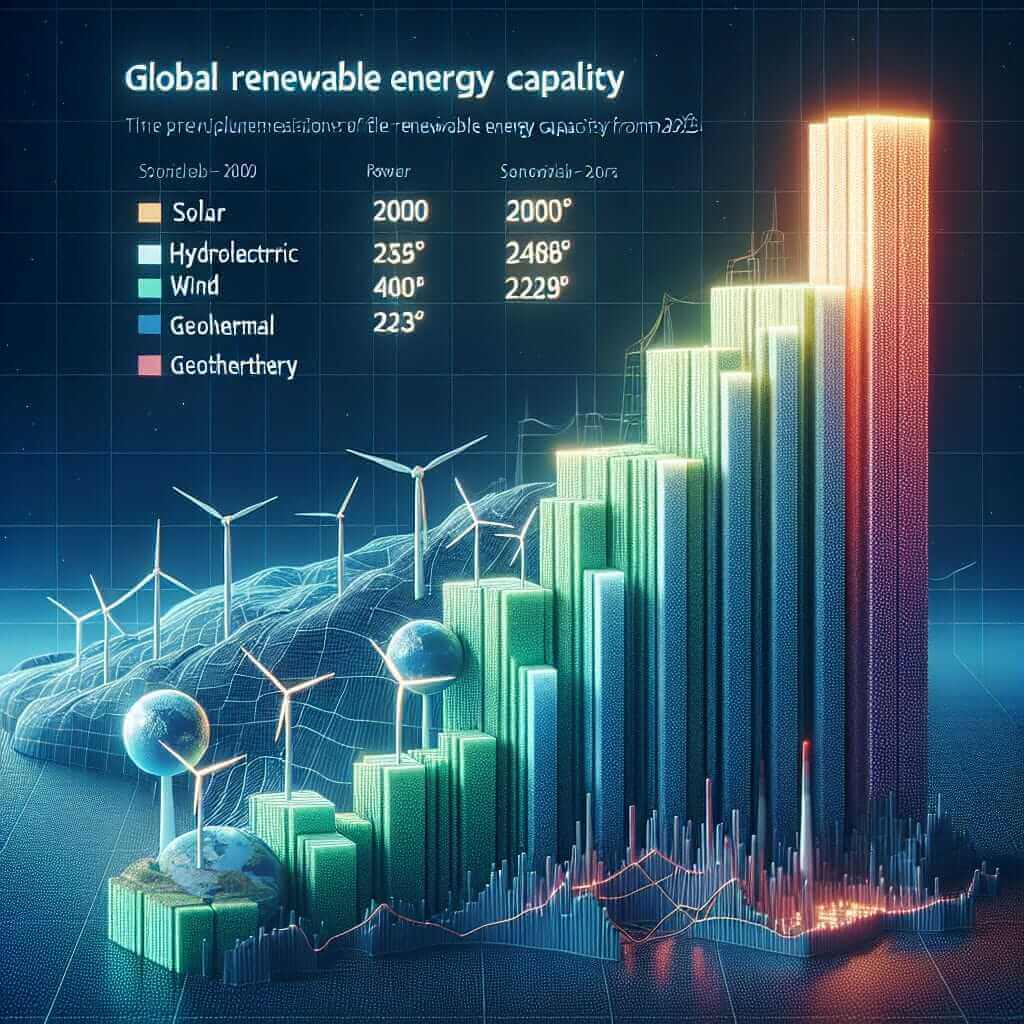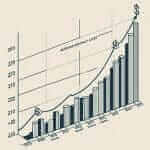Understanding trends in “Renewable Energy Capacity by Type (2000-2023)” is a common topic in IELTS Writing Task 1. It typically involves interpreting data represented in various forms, such as line graphs, bar charts, or tables. Let’s create sample tasks and delve deeply into writing strategies for a high-scoring response.
IELTS Sample Task
The chart below shows the renewable energy capacity by type globally from 2000 to 2023. Summarise the information by selecting and reporting the main features, and make comparisons where relevant.
 Renewable Energy Capacity by Type (2000-2023)
Renewable Energy Capacity by Type (2000-2023)
Analysing the Task
In this type of task, the key is to:
- Identify the main trends over time.
- Make relevant comparisons.
- Highlight significant figures and changes.
Model Answer
The bar chart illustrates the global renewable energy capacity, differentiated by type, between 2000 and 2023. The types include solar, wind, hydroelectric, and geothermal energy.
Between 2000 and 2023, there was a marked increase in the capacity of all renewable energy types. Solar energy saw the most significant growth, starting from virtually nothing in 2000 to surpassing 1,000 gigawatts (GW) by 2022. Wind energy also experienced substantial growth, increasing from about 100 GW to nearly 800 GW over the same period.
Hydroelectric power remained the largest source of renewable energy from 2000 to around 2015, maintaining a fairly stable capacity ranging from 700 GW to 1,200 GW. However, it was eventually outstripped by solar power in 2022. Geothermal energy exhibited the least growth, only increasing slightly from 50 GW in 2000 to roughly 100 GW by 2023.
Overall, the data suggest a significant global shift towards solar and wind power, reflecting advancements in technology and reductions in cost over the past two decades.
(176 words)
Tips for Writing
Vocabulary and Structure
- Compare and contrast: Use phrases like “surpassing,” “outstripped,” “marked increase,” “substantial growth,” “remained stable,” etc.
- Data trend verbs: Utilise verbs such as “increase,” “rise,” “grow,” “fluctuate,” “remain stable,” “decline,” etc.
Sentence Structures
- Complex sentences: Combine sentences to show relationships, e.g., “Although hydroelectric power was the dominant source in 2000, it was eventually outstripped by solar energy in 2022.”
- Usage of time phrases: Include time references, e.g., “over the period,” “between 2000 and 2023,” “by 2022.”
Key Vocabulary
- Capacity (n) /kəˈpæs.ə.ti/: The maximum amount something can contain or produce.
- Renewable (adj) /rɪˈnjuː.ə.bəl/: Resources that can be replaced naturally.
- Substantial (adj) /səbˈstæn.ʃəl/: Considerable in quantity.
- Outstrip (v) /ˌaʊtˈstrɪp/: To exceed or surpass.
- Hydroelectric (adj) /ˌhaɪ.drəʊ.ɪˈlek.trɪk/: Pertaining to electricity generated by water power.
- Geothermal (adj) /ˌdʒiː.əʊˈθɜː.məl/: Related to heat derived from the earth’s interior.
- Fluctuate (v) /ˈflʌk.tʃu.eɪt/: To vary irregularly.
- Gigawatt (n) /ˈɡɪɡ.ə.wɒt/: A unit of power equal to one billion watts.
- Marked (adj) /mɑːkt/: Clearly noticeable.
- Dominant (adj) /ˈdɒm.ɪ.nənt/: Most important or powerful.
Conclusion
Writing about data trends, like “Renewable Energy Capacity by Type (2000-2023),” in IELTS requires focusing on the main features, making comparisons, and using appropriate vocabulary and grammar structures. By practising with real or simulated data, like the example provided, you can aim for a high band score. Remember to keep your writing clear, concise, and well-organized, and use varied vocabulary and complex sentences to impress the examiners.


